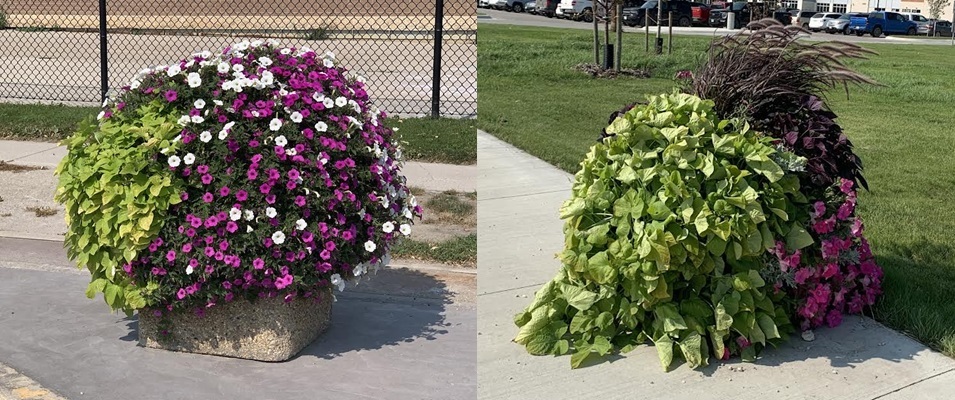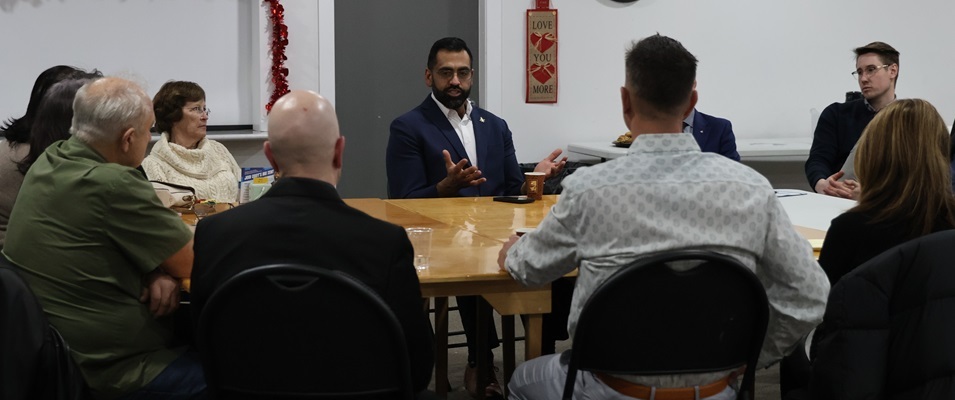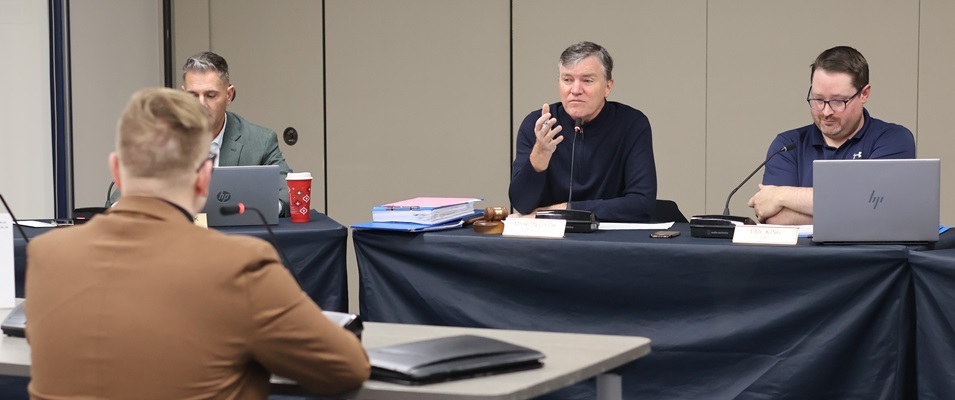
If you’ve noticed the beautiful flowers on Main Street lately, you may want to thank Terry Martin for that. Over the past few years, he has been a valued adviser to Niverville’s town beautification team and constructed dozens of self-watering systems for the town.
About four years ago, Martin began conducting research on self-watering planters, hoping to create or buy some for the flowers on his own property. After he had successfully built and installed a few of the self-watering systems, it occurred to him that his community may be able to benefit from his knowledge.
“I thought, why couldn’t we retrofit some of the Main Street concrete planters?” Martin says. “You know, those tall square ones, using recycled materials, with the objective of reducing the staff hours for watering and also reducing the amount of water that is needed.”
Martin was, and remains, an active member of Niverville’s Communities in Bloom program. He enlisted their help to spearhead an initiative to retrofit some of the town’s flowerpots with the self-watering systems.
In his first year volunteering for the town, he was able to retrofit three planters using a design he found on YouTube. Over the next two years, he was able to set up a few more self-watering planters. Eith each one, he was able to develop a better system.
The town became so impressed with Martin’s work that the Operations department hired him for a part-time advisory role with the beautification team.
Martin’s team has now installed self-watering systems in all the large, square planters along one side of Main Street and they are well on their way toward finishing the second side of the street.
Retrofitting all these planters means that Martin and the team need a lot of jugs and containers. Therefore, in February of this year he approached some local restaurants and asked if they could set aside any four-litre containers or small pails when they were done with them.
“[The restaurants] really got on board with the project and I was able to show them pictures of what I was doing and the results of it,” says Martin. “I want to recognize some of these restaurants: Pita Pit, Chicken Chef, Dairy Queen, Santa Lucia Pizza, and Pizza Pizza. They all contributed to the project.”
This year, Martin and the team have finished 15 planters and have 12 more to work on next year. After that, Martin hopes to figure out a plan to retrofit the lower, rectangular planters on Main Street.
Self-watering planters, also known as sub-irrigating planters, have a reservoir filled with water underneath them so water is drawn up slowly and consistently into the roots of the plant.
There are three main benefits to self-watering systems.
First, using such a system reduces the amount of water that is used. Plants want water every day, but watering from the top means that a significant amount of moisture is lost to evaporation. With a self-watering container, all the water originates from the reservoir at the bottom, so there’s little to no evaporation loss.
The second benefit of sub-irrigation systems is a reduction in the time needed to water them. Planters on Main Street that aren’t yet equipped with self-watering systems need to be watered every day. The completed planters only need water once a week. This is a significant reduction in time and money to the town.
Martin says that creating a sub-irrigation system doesn’t need to be difficult or expensive.
“The town has really gotten on board with this idea of self-watering, and I’ve done these planters… at a cost of $20 or less each,” he says.
The hanging baskets of flowers on Main Street are a somewhat different story. The baskets could not be hooked up to homemade systems, but over the last few years the town has been purchasing self-watering baskets. Now they are all self-watering, too.
Martin says that the hanging baskets have a smaller reservoir, so they need to be watered about twice a week. However, the amount of water saved when using self-watering systems for hanging plants is particularly significant.
“If you’ve ever seen them water, you see that they have to pour water in the top and then wait until the water actually starts seeping through the bottom,” Martin explains. “That planter will just flush water out the bottom for a few minutes after they leave, [so] all that is wasted water that ends up on the sidewalk. But with self-watering, you have none of that waste. It all goes into the reservoir and you don’t waste anything.”
Martin and his wife Brenda have lived in Niverville for 24 years. They have three children and four grandchildren. Martin’s primary job is working in music ministry for a faith-based nonprofit.
He encourages other plant lovers to try creating sub-irrigation systems for their greenery.
“Look at some YouTube videos and get yourself some buckets and make a difference!” he says.



















